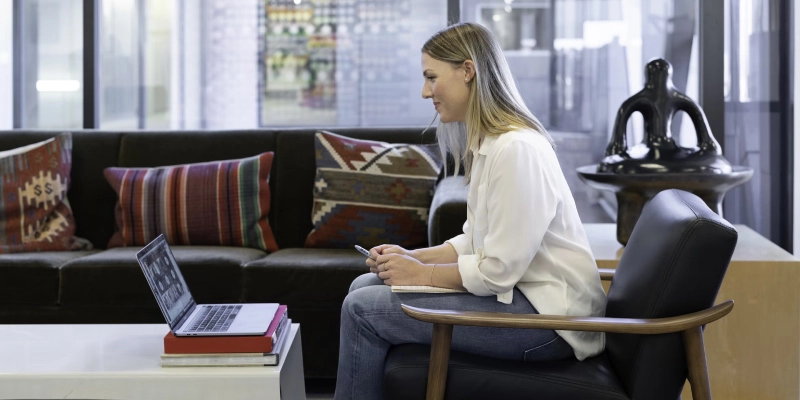Over the last few years, the way teams collaborate on creative work has changed dramatically.
To investigate the lasting impact of the pandemic, we surveyed 366 marketers and creatives from a wide range of brands, agencies, and production companies. We then brought everything together in one report: The State of Creative Collaboration in 2023.
It contains valuable insights, trends, and data points to help you and your team adapt to the new normal – whatever that means for you.
Here’s a quick roundup of our highlights:
- 2-in-3 marketers and creatives now have a hybrid work setup, up 33% year on year
- 1-in-3 are fully remote at companies with up to 10 people vs. 1-in-10 at companies with 1,001+
- 28% embraced the digital nomad life by working from two or more countries in the last year
- Three-quarters of creative collaboration now happens remotely, but 74% still happens in real time
- The average creative review process takes eight days and over three versions to get sign-off
- Waiting for feedback is the number one problem slowing teams down in the creative process
Read on for more exclusive insights, or download the report for full access.
2-in-3 marketers and creatives now have a hybrid work setup, up 33% year on year
Our study has revealed that, at the start of 2023, only 1-in-5 marketers and creatives are fully remote, compared to 2-in-5 at the start of 2022.
In the same period, hybrid work jumped from 49% to 65%. And with full-time office work peaking at 16%, it seems that a return to the old ways of working are long gone.

1-in-3 are fully remote at companies with up to 10 people vs. 1-in-10 at companies with 1,001+
One of the biggest surprises in our report was the correlation between company size and work setup.
In small businesses with up to 10 people, 1-in-3 work fully remote. But as the company size increases to 1,001+, that sinks to just over 1-in-10.
When looking at the same company sizes, the number of people with a hybrid setup shoots up from 2-in-4 to 3-in-4. This suggests that the bigger the company, the more love there is for hybrid work.
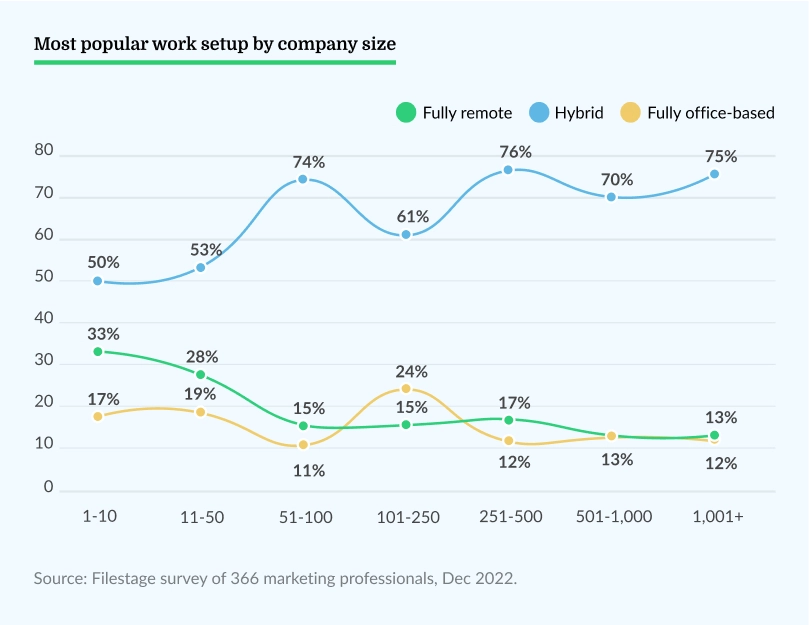
28% embraced the digital nomad life by working from two or more countries in the last year
Remote work doesn’t necessarily mean working from home. It can mean working from a cafe, a co-working space, and even another country.
As COVID restrictions faded, 28% took advantage of the digital nomad lifestyle by working from two or more countries. A further 12% (1-in-8) worked from three or more and a lucky 3% worked from over five.
And with the great return to the office failing to materialize, the perks of working on the road look set to become even more popular in 2023.
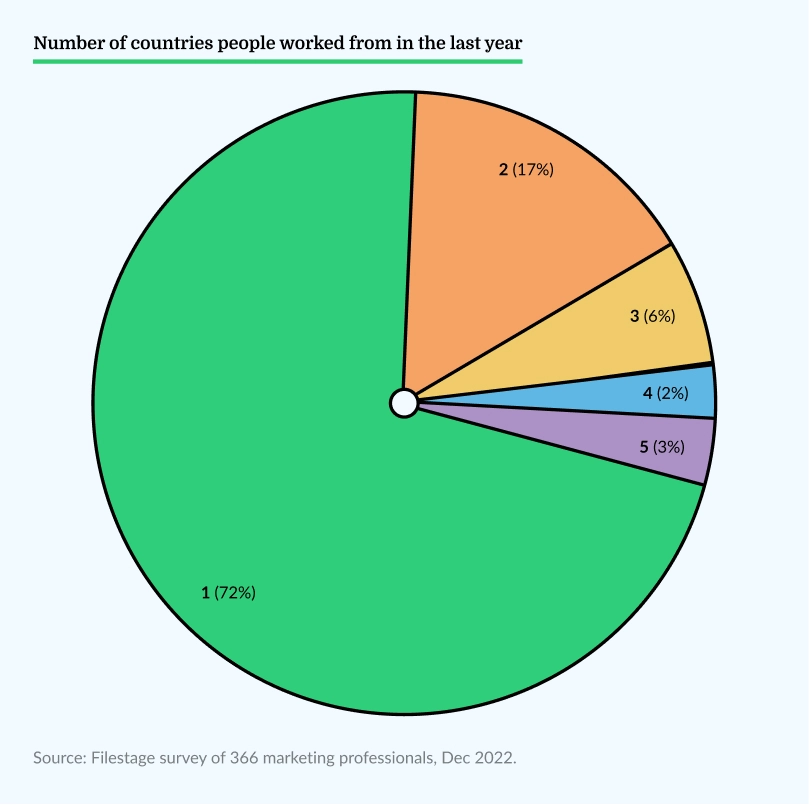
“I’m a firm believer in the idea that travel broadens the mind. Over the last year, I’ve worked from Bucharest, Lisbon, Barcelona, and Brussels. And I’m already thinking about where to go next. If you’re looking for a fresh perspective or a bit of extra inspiration in 2023, spending a few months abroad is a great place to start.”
Radu Vladislav, Team Lead Demand Generation at Filestage
Three-quarters of creative collaboration now happens remotely, but 74% still happens in real time
In the office vs. remote debate, bouncing ideas off each other and collaborating with colleagues is often touted as a big reason to get back to the office. But that argument doesn’t quite add up.
Today, an incredible three-quarters of creative collaboration happens remotely. And when asked to describe the speed of creative collaboration in their team, 1-in-3 of those working fully remote described it as fast or very fast, compared to just 1-in-5 of those in the office.
In fact, the only people to describe collaboration as “very slow” were those working in the office full time.
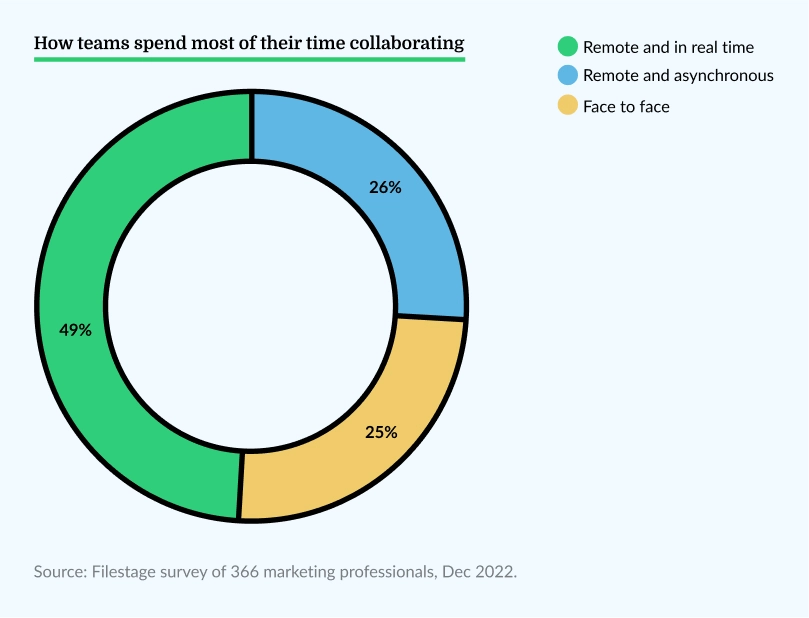
The average creative review process takes eight days and over three versions to get sign-off
Our report found that it takes freelancers just four days to get a piece of work approved, while it takes brands as many as 10 days.
Startups are the second slowest, taking nine days to get something approved, while agencies and production companies both take over a week.

“From my experience consulting on approval workflows, brands and marketing teams definitely have the most complex review processes. But by introducing consistent, transparent, and centralized review steps, I’ve seen teams shave days off their review rounds.”
Jennifer Becker, Team Lead Customer Success at Filestage
Waiting for feedback is the number one problem slowing teams down in the creative process
We asked people which problems slow their team down during the creative process and compared their responses by department. Across the board, waiting for feedback and chasing people for approval were the two biggest problems.
9-in-10 account managers and over 7-in-10 marketers and creatives say waiting for feedback slows them down. And chasing people for approval was also a big cause of frustration.
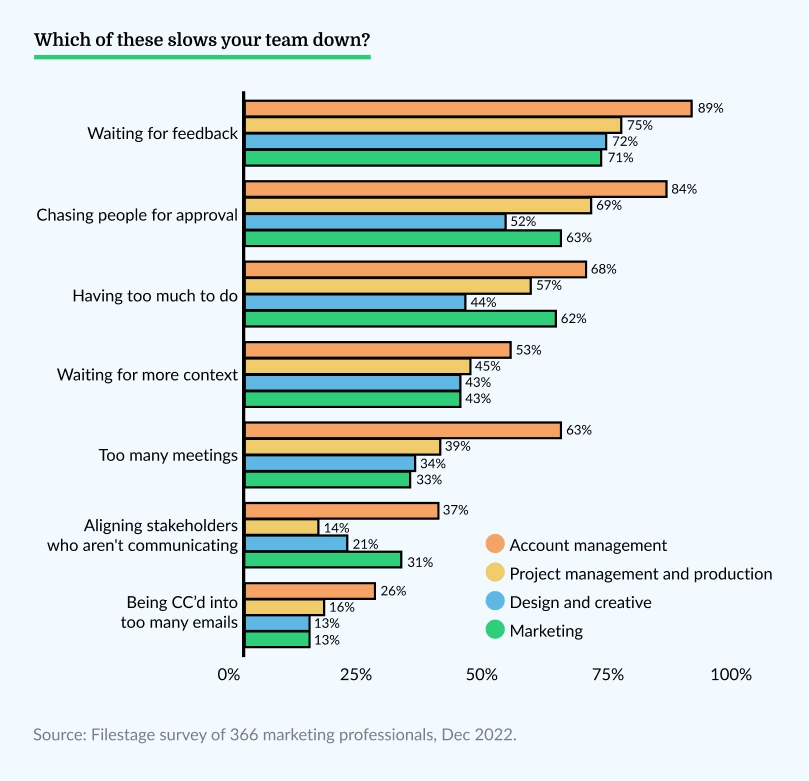
“Teams need to work on a culture of fast feedback. If reviewers can get into the habit of giving feedback on the same or next day, everyone will have more time to focus on quality – without compromising on deadlines.”
Tobias Hagenau, CEO at awork

